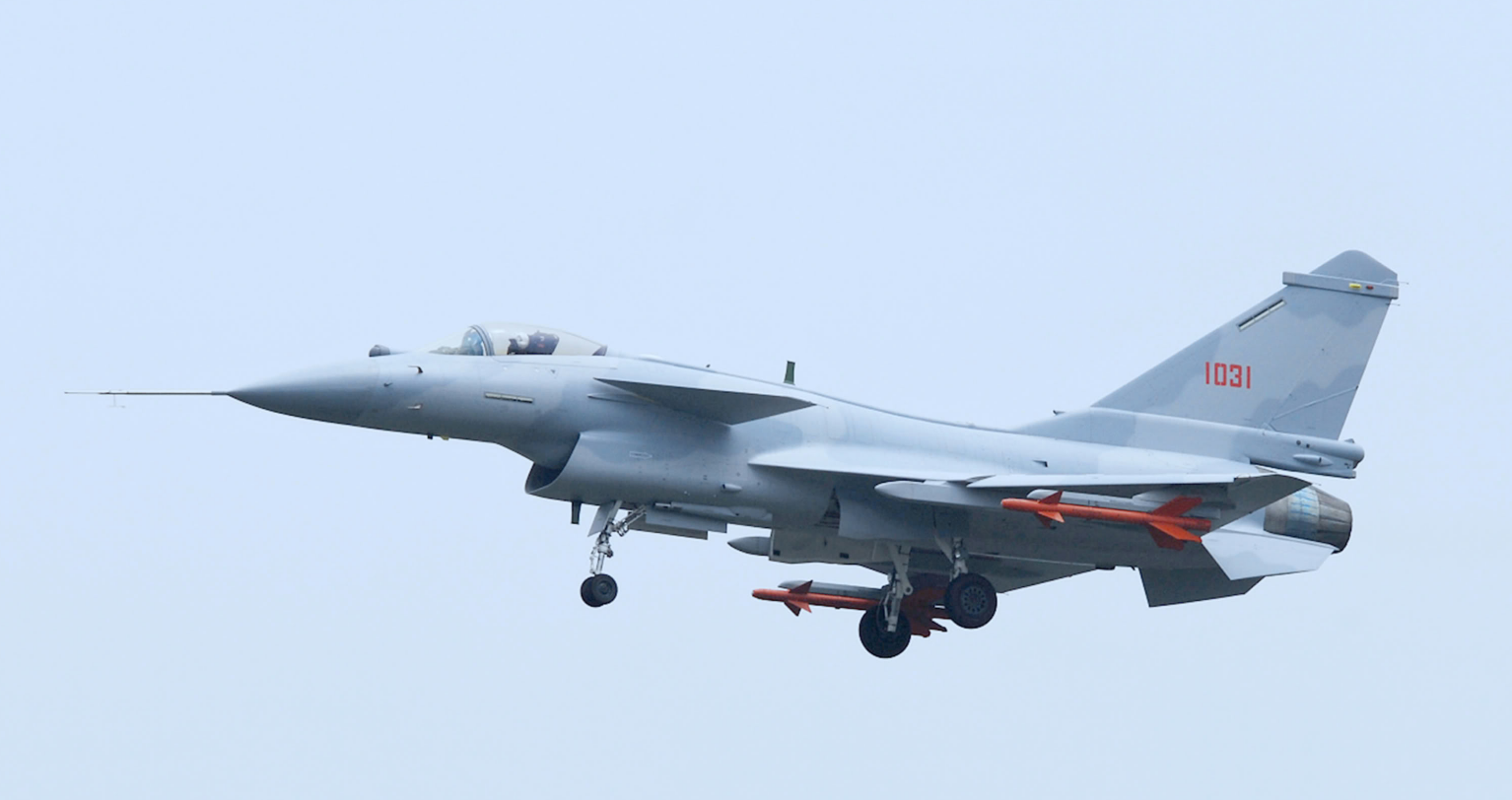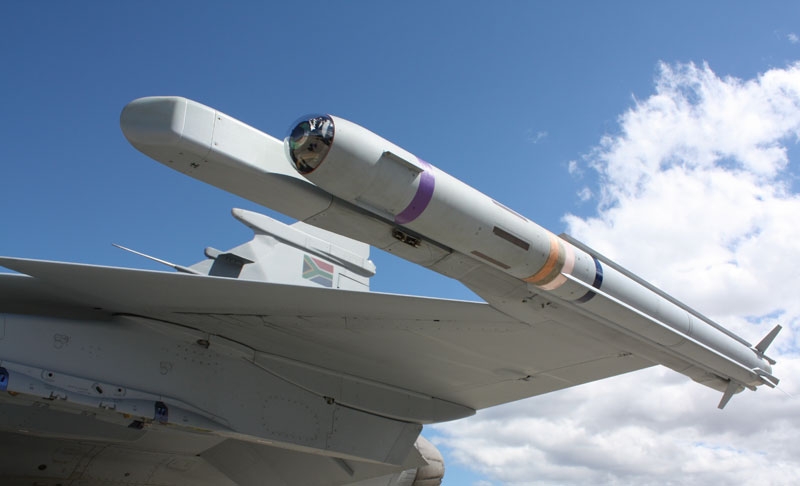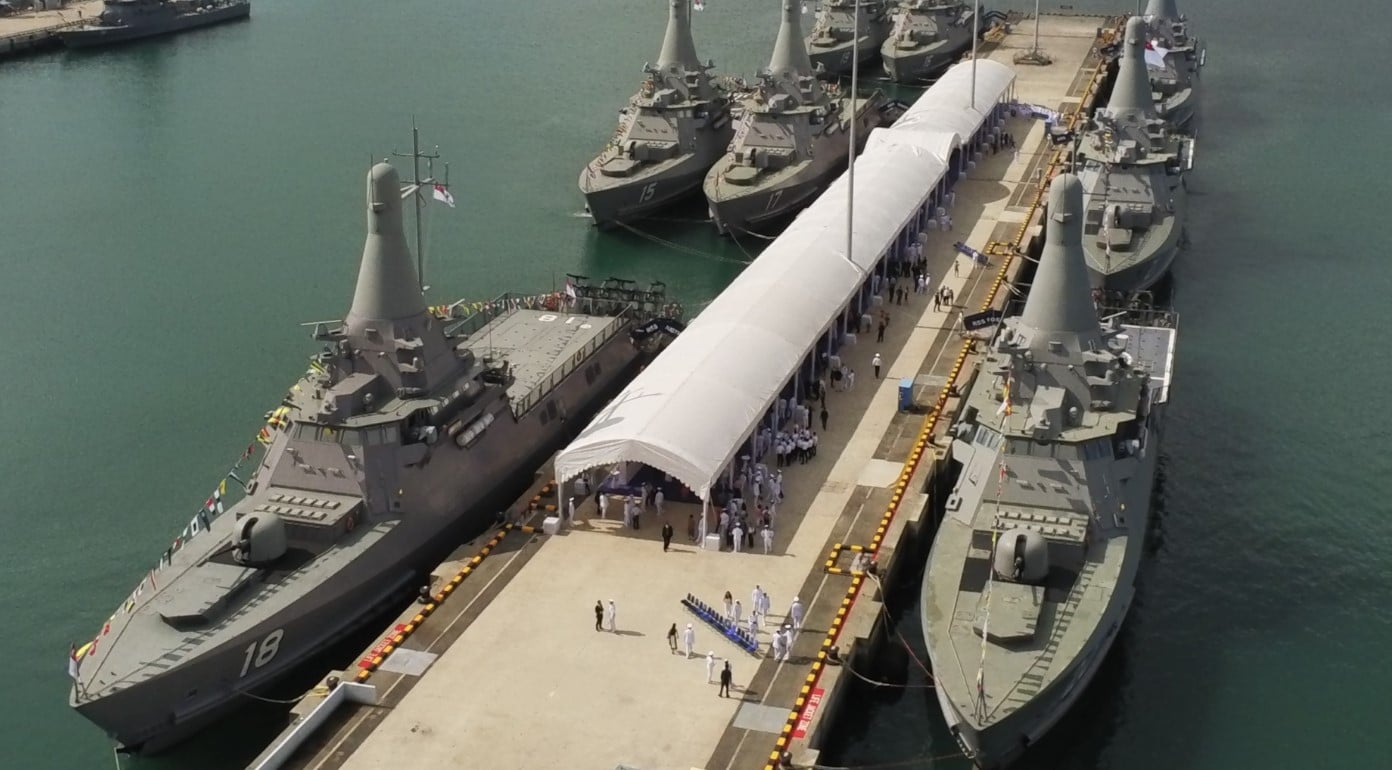2978Views 13Comments

Profile: Chengdu Aircraft Industry Group J-10
The Chengdu Aircraft Industry Group (CAIG) J-10 is the People Liberation Army Air Force (PLAAF)’s main medium-weight multi-role fighter. Beijing tasked the Chengdu Aircraft Design Institute to design the J-10 in 1988 with the intent of developing a modern and – more importantly – long-term solution for replacing the PLAAF’s legacy J-7 and J-6 interceptors and Q-5 attackers, all of which are derived from Soviet designs from the 1950s. The first J-10 prototype conducted its maiden test flight in 1998, and the J-10A and J-10S were inducted into PLAAF service in 2005. A much-improved variant, the J-10B, took to the skies in 2009.
From the onset, the J-10 was envisaged as anything but a conventional and ‘simple’ design (in as far as the Chinese defence industry at the time was concerned). This is clearly evident in the J-10’s relaxed stability design profile, which necessitated a quadruplex digital fly-by-wire flight control system. These complex elements, which have been essential elements of Western combat aircraft designs since the late 1970s, were new areas to the Chinese research and development (R&D) base in the 1980s and 1990s. The 17-year cycle – from the start of development to induction in the PLAAF – is indicative of the complexities the Chinese R&D had to overcome through the 1990s in order to bring the J-10 to fruition. Today, the J-10A is being marketed for export under the designation of FC-20.
The J-10’s airframe incorporates composite materials and is capable of a payload of 7,000 kg across 11 hardpoints. It is powered by the Saturn AL-31FN (and AL-31FN3) turbofan engine, which is being imported from Russia. The AL-31FN provides the J-10 with a thrust rating of 127 kN (and 137 kN in the case of AL-31FN3), enabling the fighter to reach a maximum speed of Mach 2.2. China has developed an indigenous turbofan solution in the form of the WS-10 series, which has reportedly made its way onto various PLAAF J-10 and J-11 units in recent years. It is not clear if the WS-10 is the default offer for the export FC-20, but the turbofan platform is the PLA’s long-term bet for its domestic platforms. The establishment of the Aero Engine Corp. of China (AECC) will consolidate China’s various aviation powerplant application programs, and in turn, aim to bring programs such as the WS-10 to full fruition.
In 2009, the first images of the J-10’s first major iterative update – the J-10B – emerged. One of the main design changes made in the J-10B includes the incorporation of a diverterless supersonic inlet (DSI), which helps reduce airframe weight and decrease the aircraft’s radar cross-section (RCS) – i.e. the aircraft’s detectability on radar. Chengdu also altered the nose cone, ostensibly to lay the groundwork for passive and – in time – active electronically-scanned array (AESA) radars. The J-10B prototype also incorporated an integrated infrared search and track (IRST) system. An iterative update to the J-10B – i.e. J-10C – was also observed in recent months.
Although Aviation Industry Corporation of China (AVIC) has been offering the next-generation FC-31 for export, it appears as though the PLAAF is dedicating itself to the continued advancement of the J-10. In fact, one could argue that the PLAAF is of the opinion that for general operational purposes, such as air defence, a fighter’s subsystems – e.g. radar and electronic warfare (EW) and countermeasures ECM) – and munitions matter more than complete commitment to a low-RCS design (such as the J-31). In this respect, one can manage costs, further distribute prior R&D overheads, and build quantitatively sizable fleets. Although the J-10B or J-10C have not yet been cleared for export, it wold not be an untenable idea to see this product enter AVIC’s product portfolio. It would be interesting if China directs the subsystems intended for the FC-31 for use on export-grade J-10B/Cs instead, imbuing the latter (which can be made available in the short-term) with credible capabilities (e.g. an AESA radar).
For AVIC, the J-10B/C could be a very competitive product. The PLAAF’s procurement depth provides the fighter with scale, which helps by distributing the R&D overhead across a very large number of units. In turn, prospective customers could be set with a relatively low cost (in the context of the capabilities on offer). Countries with fiscal difficulties and supplier access issues, such as Pakistan, would find these to be key benefits.



13 Comments
by SP
No point in buying a fighter in the same class as F-16 or the JF-17. Pakistan needs to buy an aircraft that will provide it with a technological leap in capabilities which will remain relevent for the next couple of decades or airframe design features that are lacking from its existing inventory.
by Bilal Khan - Quwa
Yes – as is J-10. The J-10B and J-10C have been designed to incorporate AESA radars and China’s next-generation air-to-air munitions. It’s a credible threat for its foes.
by bill
Pak in order to replace large number of legacy fighters will have to induct a capable fighter, the J10C if compared to even JF17 block 3 will be more capable being medium weight class fighter. Further due to more space/engine power it mabe predicted that it;s AESA will certainly have longer range than lighter Jet like JF17.
Further we may not get F16 with V upgrade in near future even considering current scenario we even may not have a chance to get AMRAAM 120 C-7 or AIM 9X. So even near future the F16s will become second tier jets along with JF17s up to block 2.
If we are not able to get Euro fighter or Su35 the only feasible option shall be J10B/C along with JF17 block 3 to counter big IAF fleet till 5th gen jet.
by bill
Even if PAF inducts J31 it will be in limited numbers due to cost factor.
by bill
Chinese will be more then willing but we should go for European Aesa Radar, EW suite and IRST, most probably from Italy. The gadgets of J10 can’t be fitted in JF17 due to space and power limitations.
by bill
Sir one should hope that PAF leadership will take urgent steps to counter IAF increasing power.
India has done some big deals while we are still monitoring situation.
by SS_IND
True..India is making major leaps as F-16 block 70 has been proposed to India already with latest radars and manufacturing units. Also it will be India manufacturing for the entire world.
http://www.defencenews.in/article/Pakistan-may-permanently-stop-getting-F-16s-from-the-US-18855
Waiting for the Gripen E offer! Hope IAF take the decision soon.
The IAF by 2020 would be
60 PAKFA 5 Gen
225 – Su 30 MKI (Super Sukhoi) 4.5 Gen
45 Rafales 4.5 Gen
120 F16 Block 70 / Gripen E 4.5 Gen
60 Mig 29 4Gen
60 Tejas MK – I and II 4.5 Gen
by Shoaib Imam
Why PAF not considering SAAB Gripen Multirole fighters…The best option in term of price and availibilty as PAF can’t purchase Euro Thypoon or SU 35 due to high cost and political constraints.
by AMAN
Yup I agree with you.
SAAB Gripen !!!!!
by Muhammad Khurram Bhatti
I think J-31 will form the backbone of PAF in the 30s by first replacing its F-16 fleet, and then the JF-17 fleet. J-31 will then be replaced by the next gen fighter.
by Al
It’s in the same weight class as the F-16 (which is an umbrella term since there are so many F-16 variants), but its onboard changes such as its AESA radar, integrated EW and ECM equipment, IRST, MAW sensors, upgraded cockpit, and enhanced airframe, would place the aircraft in the same performance league as the Rafale, Gripen NG, or Typhoon.
by Al
A Gripen NG would be redundant (more or less) with the induction of the JF-17 Block II starting in 2019, if the latter’s stated upgrades would indeed bear fruit.
by Al
The J-10C is a fairly new competitor to the Rafale or Eurofighter, but sales should pick up once it secures its first export order. Remember, Rafale didn’t “break its cherry”, so to speak, until the IAF offered Dassault the contract, and soon after two more countries joined the queue!